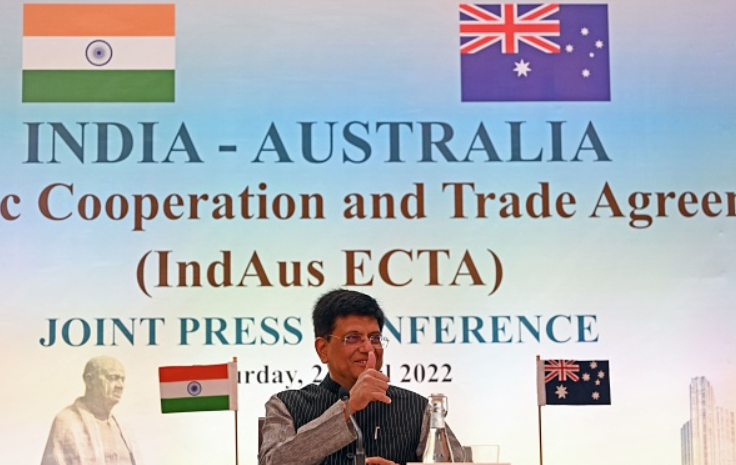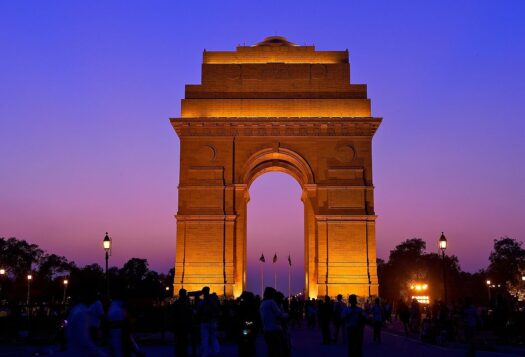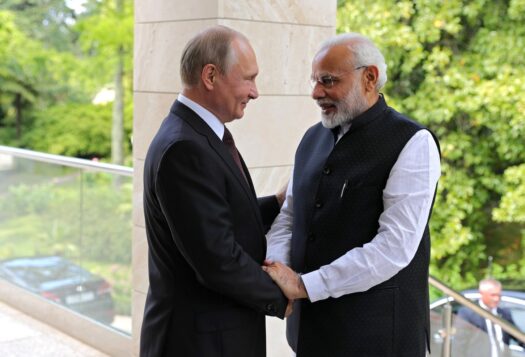
Australian Prime Minister Anthony Albanese recently concluded a four-day state visit to India. Marking the first visit by an Australian PM in six years, the trip witnessed high-profile engagements in New Delhi, Mumbai, and Prime Minister Narendra Modi’s home state of Gujarat. As experts have noted, New Delhi-Canberra relations have undergone a notable transformation in recent years, where both maritime democracies have overcome significant differences and upgraded their bilateral ties to a budding strategic partnership. While cricket diplomacy and cultural ties have defined the Indo-Australian relationship in the past, Beijing’s increasing footprint in the Indo-Pacific has provided a new strategic dimension to deepen ties.
The growing congruence between New Delhi and Canberra is shaped by their shared interest in maintaining ASEAN centrality and promoting an open and rules-based maritime order in the Indo-Pacific. To advance these interests, New Delhi and Canberra have started to engage in trilateral groupings with other like-minded states such as Japan, France, and Indonesia. Simultaneously, Indo-Australian defense cooperation is growing steadily with frequent bilateral exercises, port visits, and the conclusion of a logistics support agreement (MLSA), which will enhance interoperability between the two armed forces. Additionally, the strategic convergence has grown with Canberra’s now active participation in the Malabar naval exercises as well as the initiation of new bilateral land exercises such as Austra-Hind 2022. These developments would not have been possible without the Quad. Both Quad partners have also extended their strategic cooperation to key spheres such as space, cybersecurity, and critical technologies.
The growing congruence between New Delhi and Canberra is shaped by their shared interest in maintaining ASEAN centrality and promoting, an open and rules-based maritime order in the Indo-Pacific.
Now, PM Albanese’s visit provides a strong opportunity to work on the “underdone” Indo-Australian bilateral and deepen cooperation in key spheres, including trade, investment, and critical minerals. While the India-Australia strategic cooperation has particularly excelled in defense and security matters, it remains underdeveloped on the economic front. Albanese’s visit primarily seeks to deepen economic ties with India in a bid to increase two-way trade and build alternative resilient supply chains that aim to reduce dependence on Beijing. Canberra’s abundant supply of critical and rare earth minerals as well as its vast uranium reserves can prove to be a critical asset and point of convergence for New Delhi’s renewable energy transition plans.
Previously, the New Delhi-Canberra strategic ties were enhanced to a Comprehensive Strategic Partnership (CSP) under the Scott Morrison Government comprising several mechanisms for active cooperation. However, the true benefits of the CSP were never attained majorly due to the absence of closer market and economic ties as well as a lack of strategic clarity as to what both states wanted to achieve from their engagements. Albanese’s Labor Government has shifted to an approach that emphasizes clarity in expanding Indo-Australian ties and avoiding sending mixed signals to New Delhi.
The Albanese Government, elected less than a year ago, has made serious outreach with their Indian counterparts through the Quad and G20, which is currently under India’s presidency. Canberra seeks to compound its growing defense and security partnership in other areas, like rare earth minerals, renewable energy, trade, and foreign investment. This further signals the Albanese Government’s increasing intent to diversify its economic partnerships in the light of Beijing’s coercive tariff policies.
New Economic Opportunities
Recently, Canberra’s growing close diplomatic relationship with New Delhi has been in the spotlight. In less than a month, the ‘Raisina at Sydney’ component of the 2023 Raisina Dialogue was rapidly followed up with the G20 Foreign Ministers meeting and the main Raisina Keynote Events in the Indian capital. Consequently, such regular interactions in key international forums further provide both governments an opportunity to hold frequent strategic consultations involving key partners. The G20 Foreign Ministers meeting in New Delhi was quickly followed by the Quad Ministerial meeting that concluded with a joint statement. Additionally, frequent strategic interactions with the public through panel discussions — as seen in the Quad Foreign Ministers Panel Discussion at Raisina — further spotlighted their growing strategic convergence. The Indian-Australian bilateral is now budding with fresh momentum, which will provide an effective building block to translate the existing strategic ties into closer economic and market cooperation.
With China being Canberra’s largest two-way trading partner and New Delhi recognizing its growing trade deficit with China as a strategic, economic, and political problem, both states also share massive economic links with their potential adversary. While Australian firms have a growing footprint in the Indian market and vice-versa, as commentators have noted before, the relationship previously seemed to reflect “hesitation rather than ambition”. Additionally, bureaucratic constraints, skepticism, and complicated and cumbersome procedures were a few of the Australian business sentiments directed toward India.

Investment and access to critical minerals were high on the agenda during Albanese’s talks with Modi. PM Albanese’s delegation visiting India includes more than thirty chief executives from Australia’s largest companies — including Qantas, Macquarie Group, Fortescue Metals, and ANZ — which shows Canberra’s intent to diversify its trade and foreign investment partners and capitalize on the growing Indian market. India’s massive energy transition plans and Australia’s abundant critical mineral reserves can forge closer economic ties.
After several years of negotiations, the two Quad partners have finally concluded a free trade agreement — the Australia-India Economic Cooperation and Trade Agreement (ECTA) that recently entered into force. The ECTA will further provide strong business incentives and opportunities to Indian and Australian businesses to take advantage of the new evolving trade relationship between the two nations. It will enable key industries — steel, aluminum, and garments — to secure a cheaper supply of raw materials, which will make them more competitive.
Moreover, it is expected that there will be additional job opportunities for Indians in Australia and increased financial transactions and investment flows to India from Australia. For the 2022 financial year, Indian exports to Australia stood at $8 billion and Australian exports to India stood at $17 billion. With the activation of the ECTA, the projected bilateral trade is expected to cross $70 billion and will further provide major gains for India’s labor-intensive sectors, including textile, footwear, gems, machinery, electrical goods, fish products, These sectors will receive duty-free access to the Australian market on par with other nations, making them competitive with foreign manufactures.
New Research and Education Opportunities
There have been major developments in the Indo-Australian bilateral on the academic front as well. Last week, Australian Education Minister Jason Clare accompanied Foreign Minister Wong’s G20 delegation to New Delhi to conclude an agreement known as the Australia-India ‘Education Qualification Recognition Mechanism.’ The agreement aims to ease mobility by providing flexible visas and rolling out new scholarships for students and professionals from both nations. Additionally, Australian universities and educational services providers are the first institutions to open an international education campus in India, further signaling their growing relationship. The Indian community is the fastest-growing diaspora in Australia.
Albanese is also the first foreign leader to have visited the INS Vikrant, India’s first indigenous aircraft carrier. New Delhi and Australia also have the opportunity to utilize their strategic partnership in the maritime domain to increase their naval footprint within the Indo-Pacific to counter the People’s Liberation Army Navy (PLAN). Along with increased exercises and naval port calls, both states also have an opportunity to utilize their mutual access agreements by providing joint access to key naval facilities.
As experts have suggested, India’s Andaman and Nicobar Islands and Australia’s Cocos Islands are well-positioned to offer significant advantages for both nations in conducting surveillance and Maritime Domain Awareness (MDA) operations. Access to Cocos Islands for New Delhi will allow for easier monitoring and the creation of an expanded maritime picture around the Malacca and Indonesian straits. Access to the Andaman and Nicobar Islands would expand the Australian Navy’s footprint in the Indian Ocean and would further allow Australia to continue and expand its presence into the region for longer and more complex operations.
While shared concerns over China’s belligerence have been the key driver of this relationship, Australia and India still need to cement and deepen habits of bilateral defense and security cooperation.
In light of Canberra’s ambition to develop its military and critical technological capabilities through AUKUS and the Quad, its bilateral defense partnership with New Delhi will be an important building block. Although Canberra under the Albanese Government has focused on diverse engagements vis-à-vis New Delhi that have tried to lay equal emphasis on both security and non-security issues, some experts argue that the bilateral defense and security relationship between the two Quad partners still remains underdeveloped.
While shared concerns over China’s belligerence have been the key driver of this relationship, Australia and India still need to cement and deepen habits of bilateral defense and security cooperation. Both Quad partners should also work to find pragmatic pathways to address capability gaps and streamline efforts to develop a shared understanding of the threats and possible contingencies in the Indo-Pacific. A shared understanding of threats will further continue to build congruence and compound their strategic ties in other key economic spheres. The Indo-Australian strategic partnership only seems to be moving upwards from this point. Albanese’s maiden visit to India will certainly provide an opportunity to translate the robust strategic ties in other spheres, including trade, education, investment, and supply chain resilience.
***
Image 1: Money Sharma/AFP via Getty Images
Image 2: Sajjad Hussain/AFP via Getty Images


